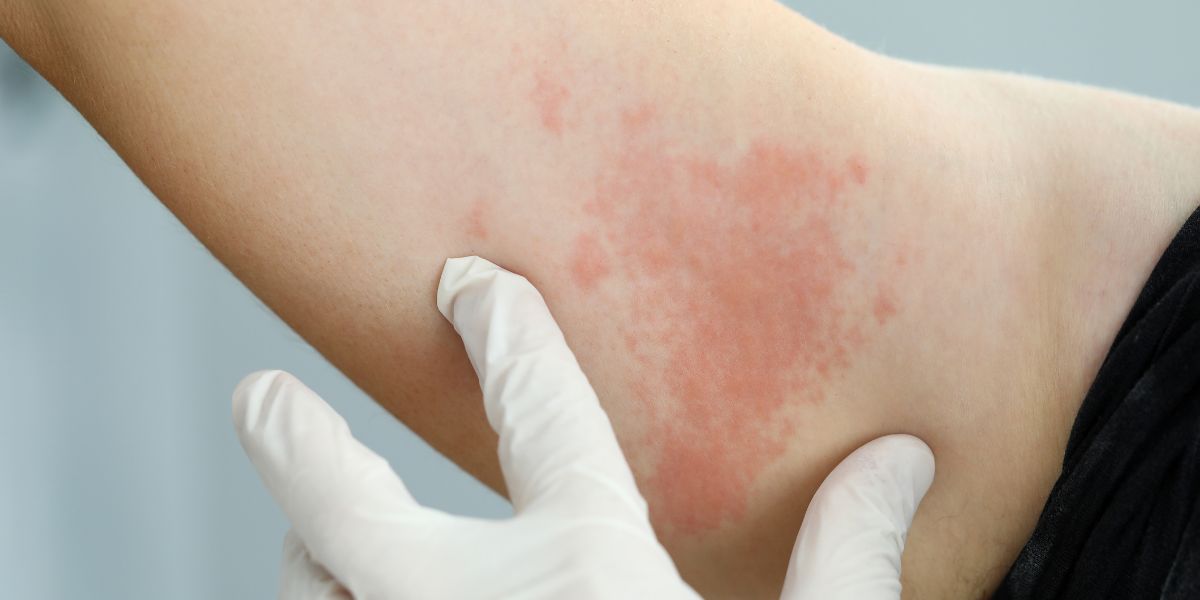The skin is one of the most over looked organs because it is so obvious. However, people diagnosed with diabetes are at risk of several skin disorders due to the complications of diabetes.
In this guide, we look at the wide ranging skin-related conditions that can occur as a result of diabetes.
Skin dehydration
Diabetics are quite prone to dehydration due to the effects of polyuria , which is one major symptoms of both type 1 and type 2 diabetes
Dehydration can extend to the skin which can dry and crack, making it prone to infections, and this is especially dangerous because diabetics have a limited ability to fight off infections.
It is important to look after your skin and be aware of any cracking or dry looking skin as soon as it appears, and try to keep yourself hydrated at all times of the day.
Necrobiosis Lipoidica Diabeticorum (NLD)
This is a skin disorder which affects mostly the shins of diabetic people and is where the skin become red, inflamed, and uncomfortable. The skin becomes very delicate and can be injured easily and can form ulcers. However, left alone, it has no symptoms other than aesthetically.
NLD most frequently appears on the shins, often on both, but can also appear on the hands, forearms and trunk of the body.
The cause of NLD is not know, and although it is more likely to occur following a minor injury like a graze or bruise, it can appear for no apparent reason.
Around half of all people who suffer with NLD are type 1 diabetics, although the percentage of those affected by this skin condition is less than 1%.
The best way to prevent NLD is to take good care of your skin. By treating it with moisturiser, using a neutral soap and ensuring that you dry your skin thoroughly after washing, you can help to keep it clear.
- Click here for more information on skin care
If you have already developed NDL, the best thing to do is to check with your diabetes healthcare team for advice. However, protecting the afflicted area and keeping it moisturised, clea, and in good condition will help to alleviate it.
In some cases it might be viable to use make-up to cover the condition if you feel embarrassed by it, but cosmetics may aggravate NLD.
It is best to talk to your doctor before attempting any concealment.
Lipohypertrophy
Lipohypertrophy is a skin disorder that affects insulin-dependent diabetics It is characterised by a series of fatty lumps on the skin, which appear if multiple insulin injections are injected there.
It can also feel firmer than usual and can become a visible mark.
Lipohypertrophy can be easily prevented by rotating injections sites, and if it does form, avoiding injecting at the affected site for a prolonged period will help it to heal up. You can always refer to your diabetes healthcare team for advice.
- For more information, see our lipohypertrophy guide
Acanthosis Nigricans
This condition is fairly common and is basically a darkening of the skin at particular points on the body, where the skin folds. These are usually the neck, armpits, groin and joints such as of the fingers and toes. The skin can also become thicker and leathery.
Acanthosis Nigricans is thought to be a visual manifestation of insulin resistance
Fungal skin infection and diabetes
Bacteria feeds on glucose and as diabetes patients tend have elevated concentrations of glucose in their bloodstreams , they are more prone to developing bacterial infections.
Fungal skin infections include:
Thrush
One of the most common skin infections is thrush, which is an unpleasant infection that can occur in the damp places around the body, including the genitals, mouth and armpits.
Thrush can be cured with antibiotic medication, and so it is not a major problem providing you go and see your GP as soon as you think you may have contracted it.
Thrush can also be passed between people via physical contact with the infected site, so be aware of this if you are exhibiting symptoms.
- Click here for more detailed information on the links between diabetes and thrush
Foot Infections
It is important to look after the skin, even more so on the feet as they are normally most at risk of peripheral neuropathy
Infections can spread throughout the foot without notice because of the lack of feeling. If the infection spreads too far or to the bone, then it could result in amputation.
If you have diabetes, it is important that you take very good care of your feet and check them regularly for any signs of infection. Maintaining good control of your blood sugars will also help to prevent neuropathy, and so help to reduce the likelihood of a chronic foot infection.
Atherosclerosis and the skin
Atherosclerosis is a condition usually associated with the heart and the blood vessels that supply the heart. However, when the arteries that supply the skin with blood become narrowed as a result of atherosclerosis, the skin can be visibly affected.
This narrowing effect is usually associated with fatty build-ups and can cause hair loss, discoloured toenails and thin and shiny skin. Any injuries will also heal slower because of the lack of blood carrying the necessary components to heal it.
Digital sclerosis
This is a type of sclerosis that particularly affects the skins around the joints of the fingers and toes. The skin becomes waxy and stiff and can cause problems with mobility.
The symptoms can be aided by moisturiser and lotions than can work to soften the skin and help.
Preventing skin disorders
The best way to prevent skin conditions as a result of diabetes is to keep your blood glucose levels under control. The majority of issues stem from having abnormal levels of blood glucose so testing regularly and keeping on top of your blood glucose will help avoid these complications.







